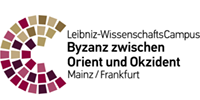The Balkans Between Late Antiquity and the Middle Ages: Warfare, Migration, and Socio-Economic Change, 565-750
The early medieval Western Balkans were a melting pot of cultures, societies and economies, sitting at the crossroads between the Latin West, the Byzantine East, and the Avar Khaganate to the north. Their spectacular Adriatic, Ionian and Aegean coastlines, and mountainous interiors provide fascinating examples of the transition from Roman Antiquity to the Byzantine, Latin Christian and Slavic Middle Ages.
Publications on the late 6th-8th c. Balkans are often dominated by a 'declinist' narrative, using terms such as 'the end of Antiquity', and referring regularly to 'depopulation', 'stagnation' and 'decline'. Buffeted by barbarian invasions, mass Slavic immigration, the reduction of Byzantine state activity and outbreaks of the plague, many areas allegedly collapsed economically, their terrified populations either fleeing or sheltering in isolated coastal or hilltop fortified settlements.
Such a pessimistic view of the post-Roman world has been challenged by scholars working on Western Europe, where a more sophisticated picture of continuity, change and regional variation has started to emerge. Historians of Early Byzantium have also pointed to a more regionally complex picture within the parameters of overall economic contraction. There is a need, therefore, for a similarly nuanced approach to the early medieval Western Balkans, comparing localised and trans-regional trends, and focusing on evidence which contradicts the argument for social and economic collapse.
The project will thus synthesise from a historical perspective recent archaeological evidence for settlement patterns and burials, productive activity, industrial and agricultural, patterns of exchange, and political organisation. It will at the same time, explore the literary and documentary evidence for political events such as barbarian invasions and immigrations and Byzantine imperial responses, as well as for the socio-economic impact of these developments. Finally, comparative theoretical models are intended to be built by using research from other periods and regions and, more broadly, concerning pre-modern agrarian economies and their relationships with centralised tax-collecting states and their aristocracies. While contemplating over-arching themes, the investigator will, at the same time, set out to build regional case studies. This approach will avoid generalisations, highlight sub-regional complexity and contribute to a more varied, nuanced and less uniformly pessimistic view of socio-economic trends.
Unterstützung
Alexander von Humboldt-StiftungPublikationen
- A. Sarantis, ‘Two worlds in crisis: warfare, political change, and economic recession in Anatolia and the Balkans, ca. 565-750’. In: P Booth / M. Withby (Hrsg.), Mélanges James Howard-Johnston, (Travaux et Mémoires 26) (Paris 2022) 163-190.
- A. Sarantis / A. Leone, “The Middle Euphrates and its transformation from the 3rd to the 7th c.: the case of Dibsi Faraj”, The Journal of Late Antiquity 13.2 (2020) 308-351.
- A. Sarantis, “The socio-economic impact of raiding on the eastern and Balkan borderlands of the eastern Roman empire, 502-602”, Millennium 17 (2020) 203-264.
- A. Sarantis, Justinian’s Novella 11: Memory and political propaganda in the build-up to the Gothic War”, Early Medieval Europe 27.4 (2019) 494-520.
- A. Sarantis, “Military provisioning in the sixth-century Balkans”, The Journal of Late Antiquity 12.2 (2019) 329-79.
- A. Sarantis, ‘The Rise and Fall of the Gepid Kingdom in Dacia and Pannonia, 453-567’. In: T. Vida (Hrsg.), Kollaps - Neuordnung - Kontinuitäten: Das Theissgebiet nach dem Untergang des Hunnenreiches (Mainz 2019) 1-18.














